Walk along the old Tokaido from Hakone to Mishima
| Travel Reports by sparringenthu | view profile of sparringenthu |
|
| next post |
| Note: The opinions and views expressed in this user report are those of the individual author and do not necessarily reflect the opinions and views of japan-guide.com. |
December 16, 2013 - Walk along the old Tokaido from Hakone to Mishima
The "Tokaido" (Cน, East sea road) is one of the five oldest road in Japan.
Its name is after the fact that the road travelled along the sea coast from Edo (modern-day Tokyo) to Kyoto. And its traditional name is inherited to "Tokaido Shinkansen" or we call the "National route 1" as "Tokaido" nowadays.
Some part of the old Tokaido (especially Tokyo and Kanagawa area) has been tarmac-paved and transformed to the National route 1 but some part still remains as the modest path for locals.
The part from Hakone to Mishima is the most well-preserved one in east portion of this road. I walked there to feel its old atmospherec
Start from the bus terminal No. 5 just in front of the south gate of Mishima station by "Numazu Tozan Tokai busiภรoRCoXj" to Moto-Hakone. (ณ ช, the center of Hakone)
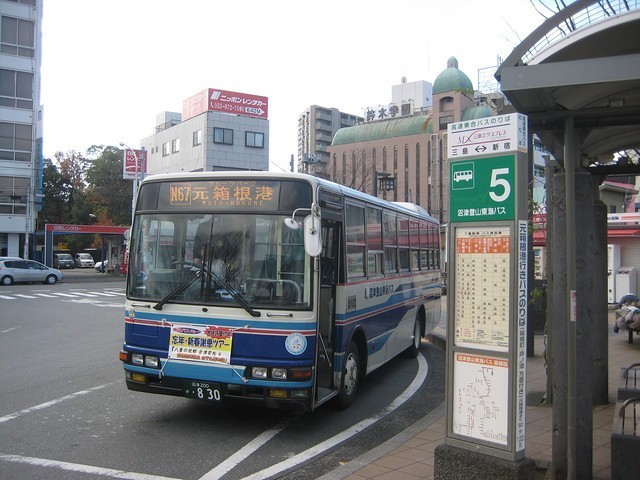
Tourist information center is 30 or less seconds' walk from the station (earth colored building is the center and the green leaf building is Mishima station in the picture below), so you can collect some travel brochures there before the trip for free. English, Chinese, and Korean one is available.
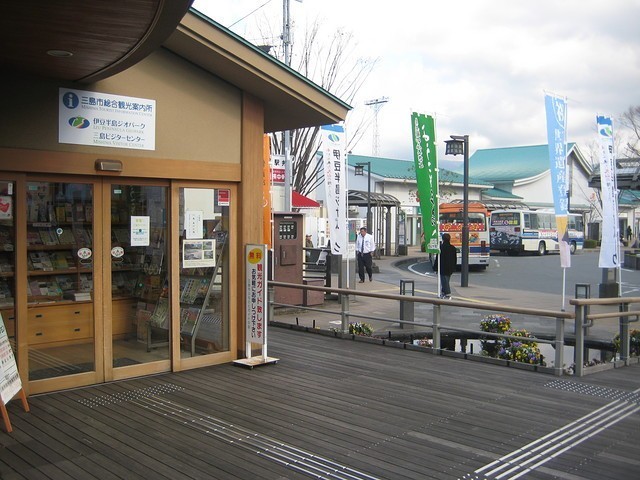
The local bus from Mishima to Moto-Hakone leaves every one hour usually (more on holidays), and its fee is just 1000 JPY (as of Dec. 2013) one way.
If Hakone town is not your interest, you are supposed to get off the bus at Settai-Chaya(ฺาฎ, 740 JPY from Mishima station as of Dec. 2013)on the way to Moto-Hakone. Let me mention its reason afterwards.
There were originally 53 government post stations along the old Tokaido, where travelers had to present traveling permits at each station if wanting to cross.
Hakone has been considered as the natural fortress of Edo Bakufu (Government in Edo era, 1603-1868) due to its mountainous terrain, so to get the permission to the next station from Hakone was very difficult at that time.
This is the reason that one of only a few Sekisho (checkpoint office) that survives (reconstructed) now is there at Hakone. As a result, "post towns" developed to provide travelers with places to eat, rest and stay overnight during their arduous journey around post station. They were called "Shuku" or "Juku"(hj
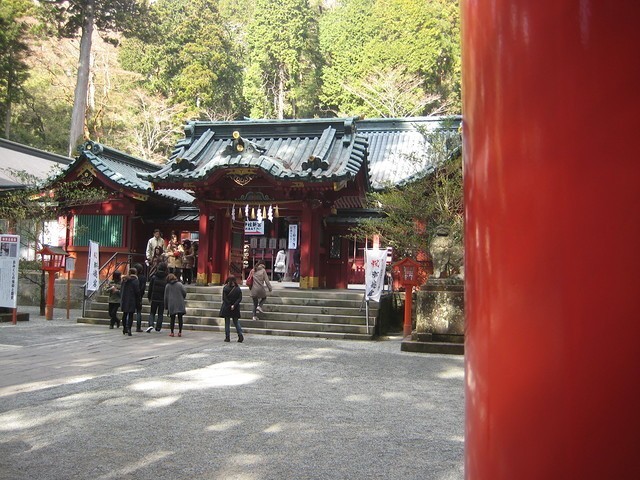
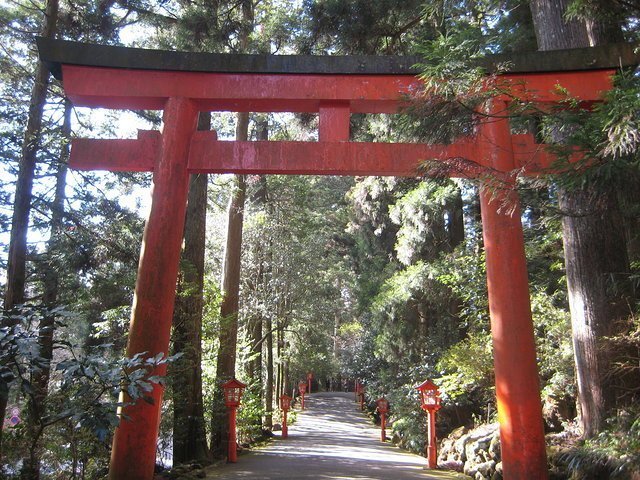
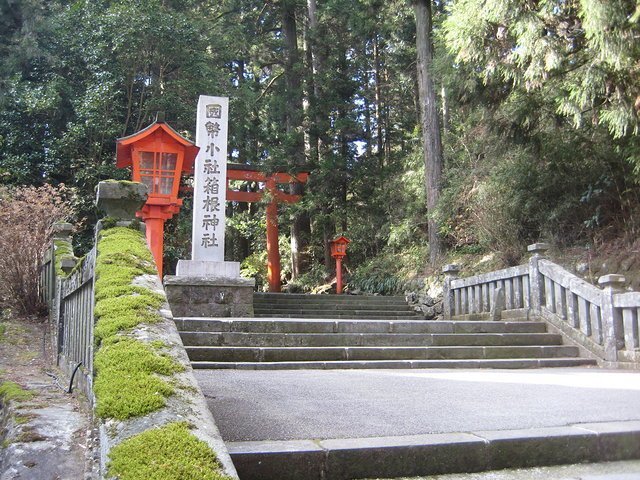
Hakone-Juku was the tenth post town from the start of the old Tokaido, Edo Nihon-bashi (bridge), and Mishima-shuku was the eleventh.
Both town has been had its incomparable heritage, SHRINE (Jinja or Taisha). Hakone Jinja is one the oldest Jinja in east Japan, and Mishima-Taisha is one of the biggest shrines in Japan.
So this 20km long trail can be said as one of the old pilgrimage route of this country.
Hakone Shrine was founded in 757 originally at the summit of Mount Komagatake, then relocated to the present place in 1667.
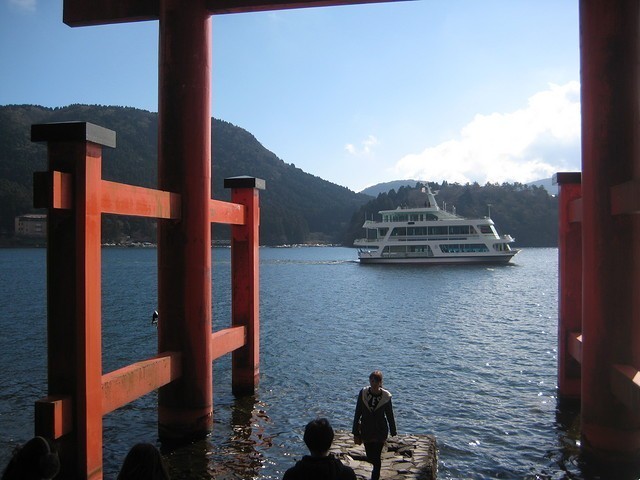
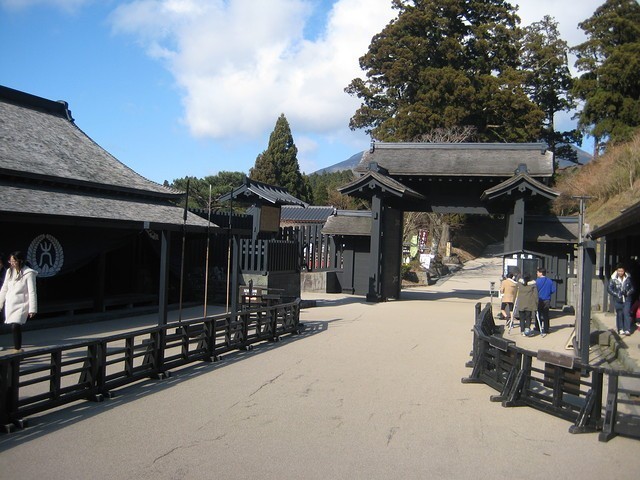
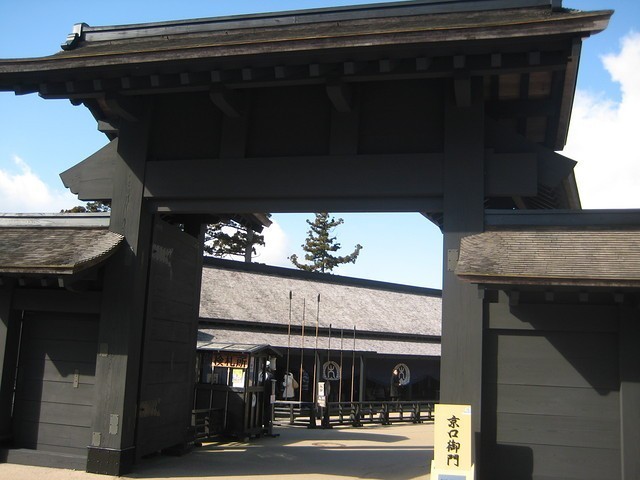
Near the parking beside this Sekisho, the old Tokaido trail starts, but it is a little bit hard for foreigners (even for Japansese travelers) to find its sign.
Of course you can get back the National Route 1 to the direction of Mishima at first.
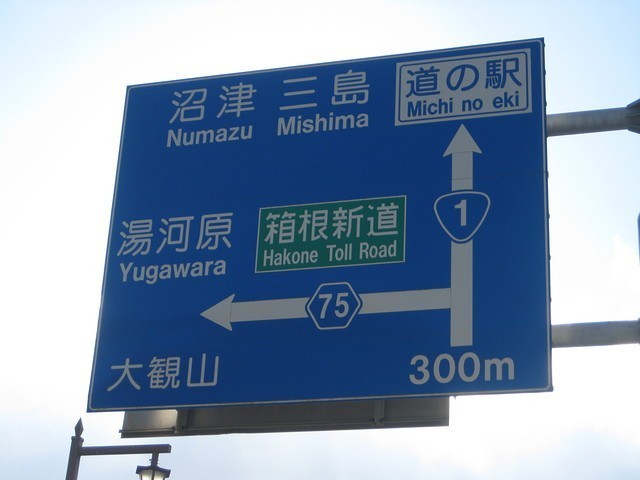
But please be noted that the Route 1 in this area is packed with heavy traffic and has no pedestrian area (Please let me describe again; There is NO pedestrian area on the NATIONAL Route 1!)
Because not only unpleasant but dangerous, I strongly recommend you to manage to find the old trail or get back to Settai-Chaya(ฺาฎ) by local bus (Numazu Tozan Tokai Bus)
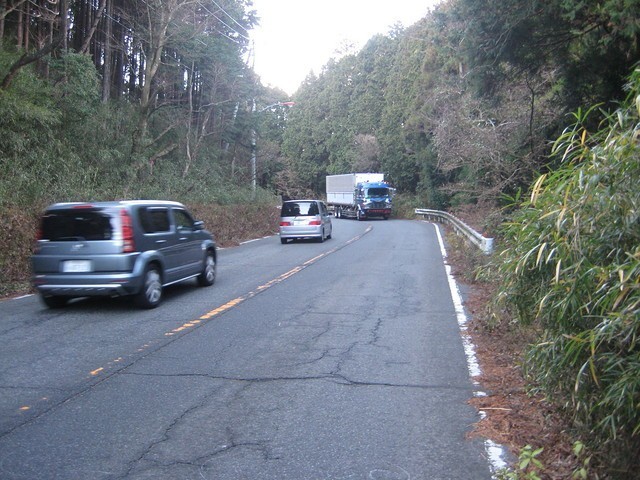
Just beside the bus stop of Settai-Chaya, you can find the old Tokaido easily.
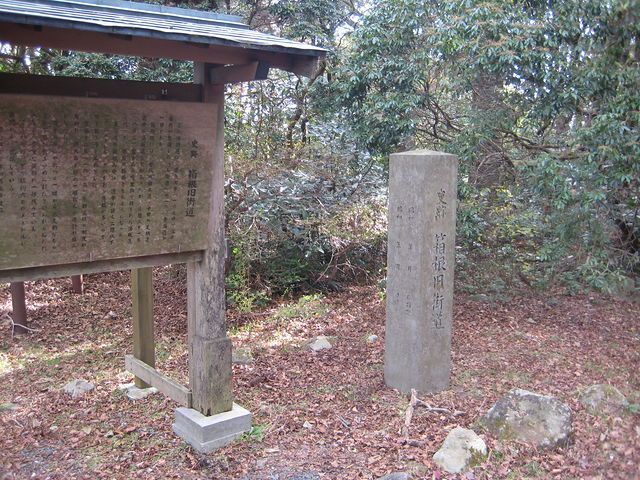
Well maintainanced stone paved path slopes down to Miahima.
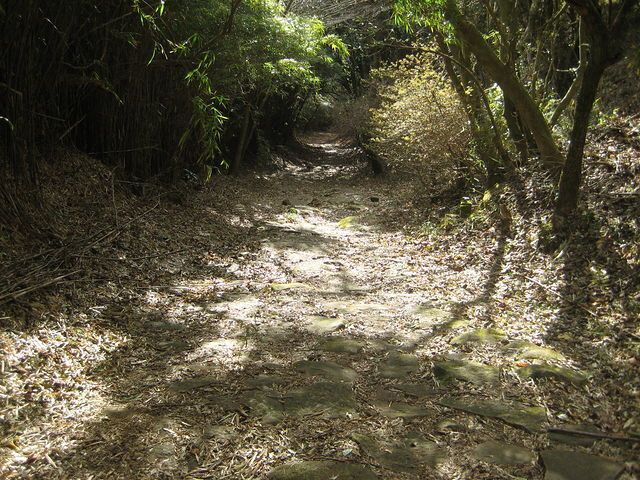
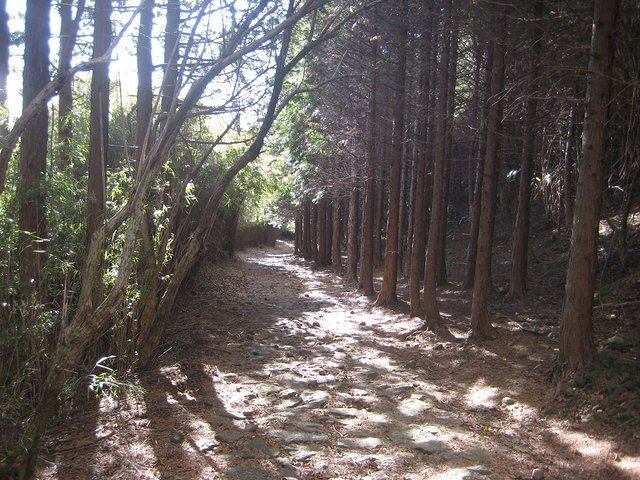
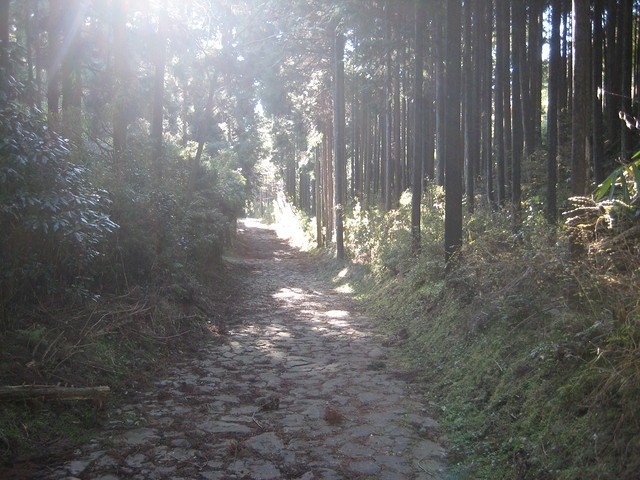
Signs are only in Japanese. But you can go progress in accordance with their pointing direction.
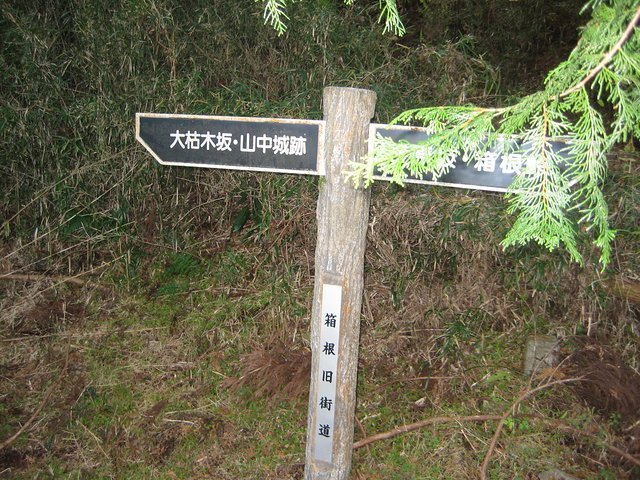
As this board says "Be aware of cars when crossing" you must walk along or cross the National Route 1 sometimes.

At Yamanaka area, you find a pedestrian bridge.
After getting over the bridge, you automatically get into the ruins of Yamanaka castle.
The ruins itself is the part of the old Tokaido.
Odawara Hojo(k๐) clan that ruled around that area during the 16th century built this castle as the guard from western invaders to protect this clan's main base, Odawara castle.
In 1590, Toyotomi(Lb) clan (the first monarch all over Japan) destroyed this castle and it has not been rebuilt. But its fosses and redoubts are well-preserved and their harmony with nature around is tremendous. You can enjoy the view of Mt. Fuji when the weather permits.
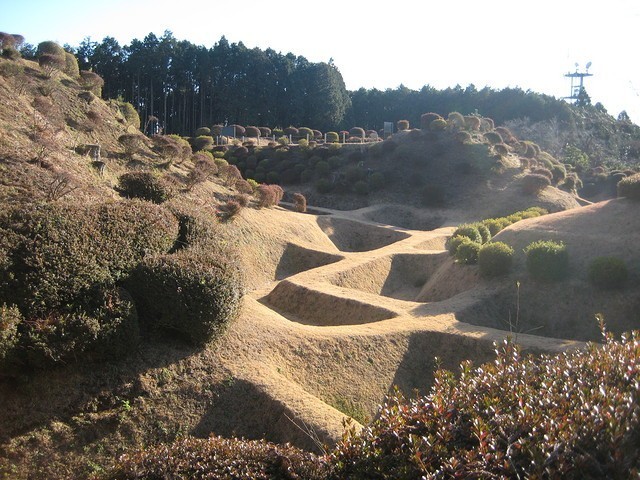
There is little information even in Japanese in this ruins, of course no English nor Chinese. I assure you must get lost once or more. But do not worry about. The ruins is not so huge and here is not Himalaya. Let's get lost and take your time!
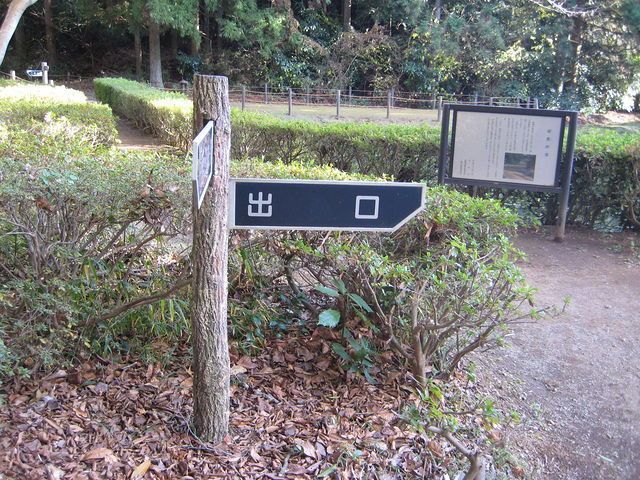
After managing to escape from the castle, please do not miss Sokan-ji (@ี, Sokan tmeple) the part of the castle.
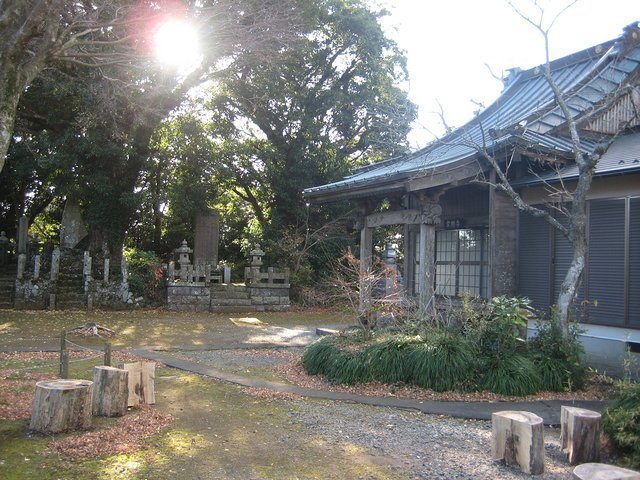
Temple itself is quite tiny. In the front yard of this temple, there remain gorgeous gravestones of famous Samuraisf who died in the battle between Hojo and Toyotomi clan.
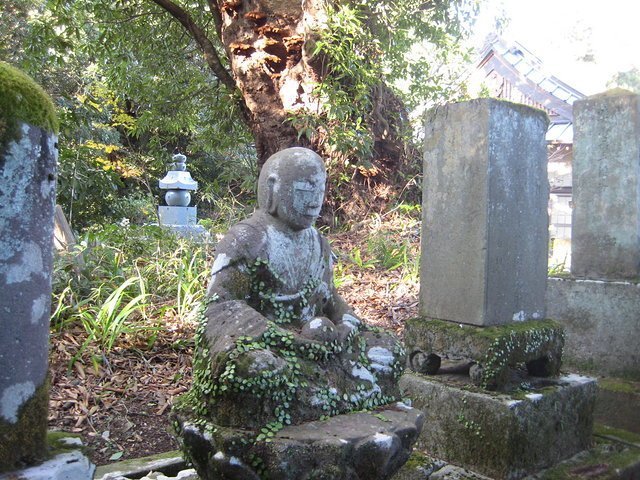
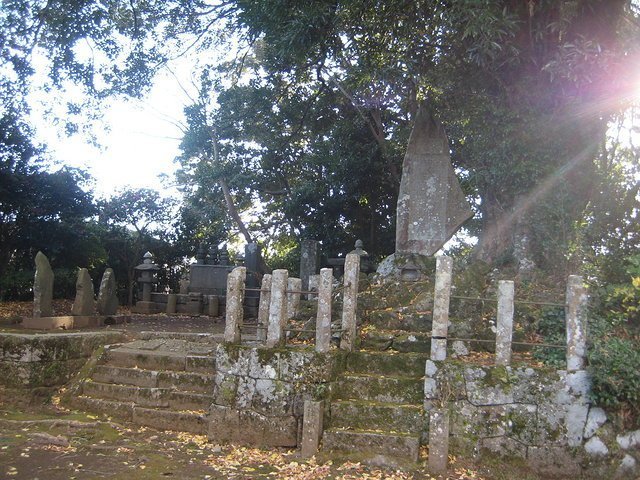
After glancing at them, please do not forget to visit the back yard of this temple.
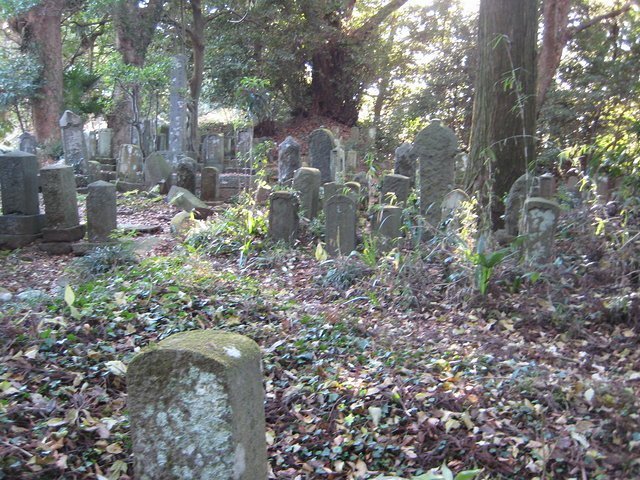
As contrasted with the Samurais' cemetery, there are many No-man's graves are there, almost abandoned. But please watch each of them carefully.
Though having over 500 years history as one of Jodo Buddhism (branch of Pure Land Buddhism) temple, some gravestones of Kakure-Kirishitan (hidden Christians) can be found.
Edo shogunate banned Christianity strictly for over 200 years from the beginning of the 17th century. Not only its fold but the one who had hided them from the police was sentenced to death, so the definite record has not been kept in this temple, but some gravestones on their surface the cross was carved ingeniously tell us the role this temple played at that time.
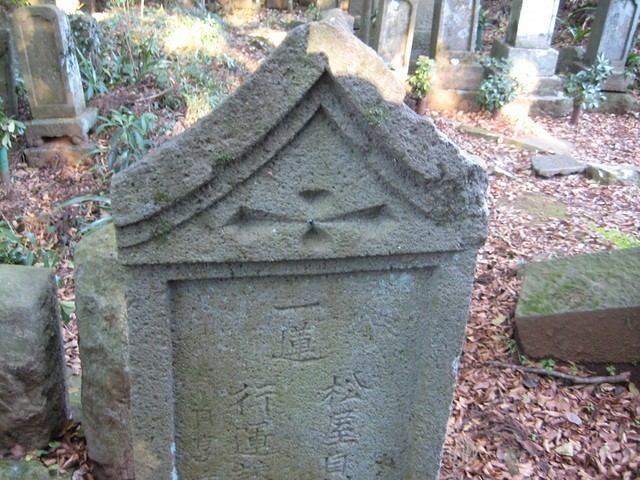
You must walk along the National Route 1 for 1 minute after leaving Yamanaka castle.
Take care to find this information board to get back to the old trail.
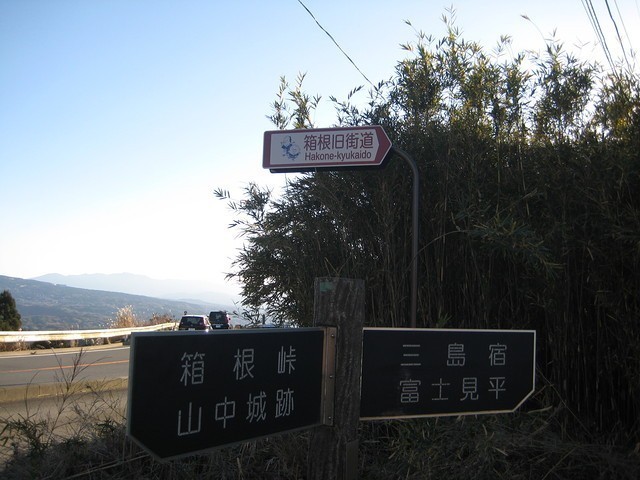
Tremendous view of Mt. Fuji is waiting for you on the way.
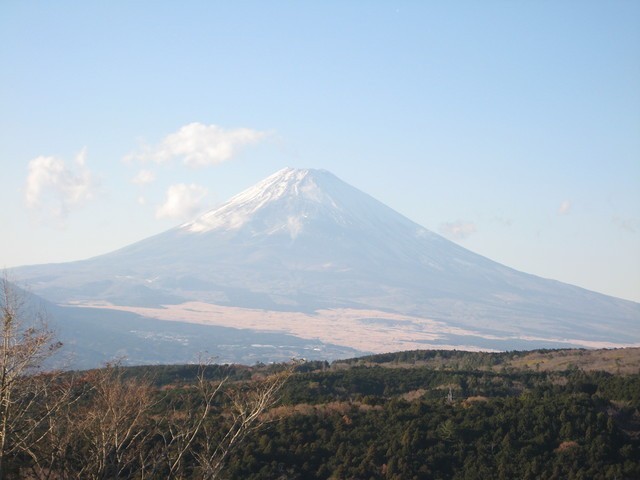
Near the town of Sasahara, stone paved road changes to community road for locals gradually. But its old oriented atmosphere is still well kept.
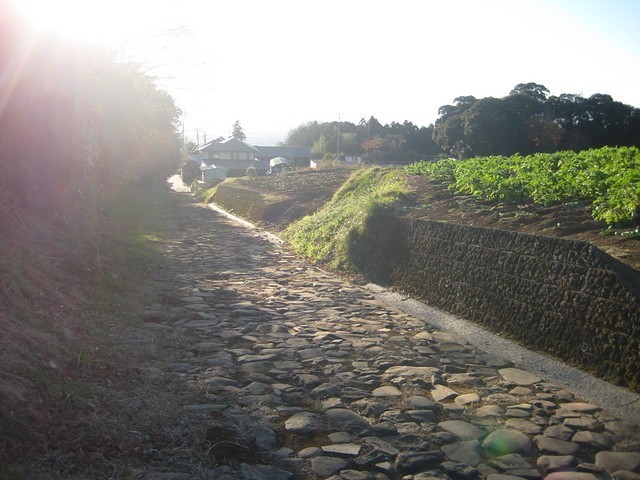
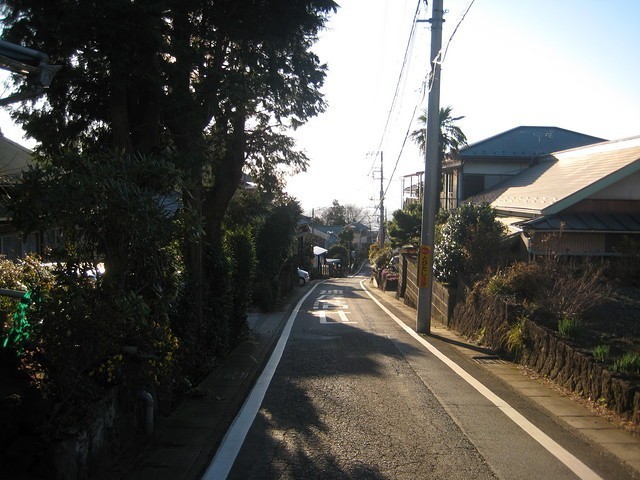

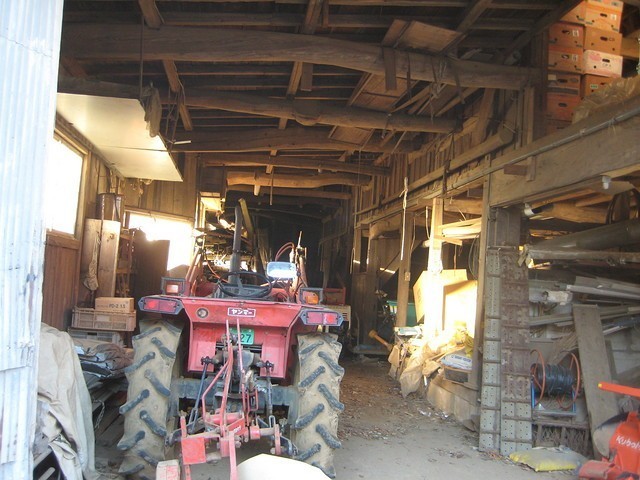

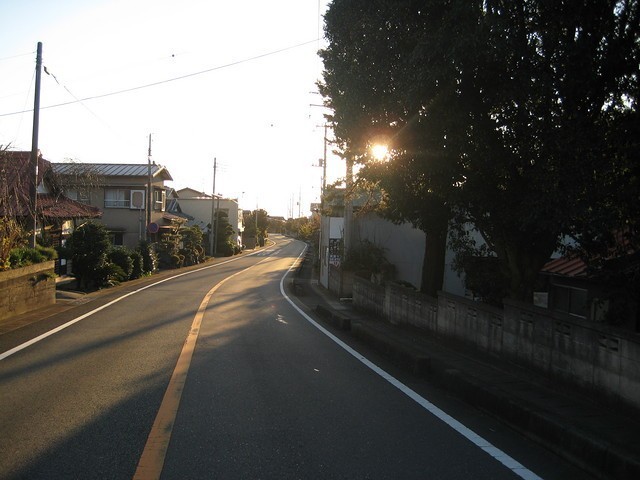
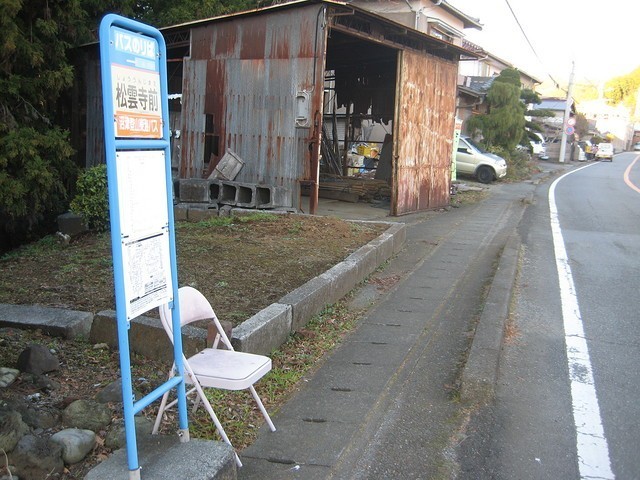
Shoun-ji (ผ_, Shoun-temple) is famous for the small rock in its precincts The Meiji Emperor took a rest on during his journey to Hakone over 100 years ago.
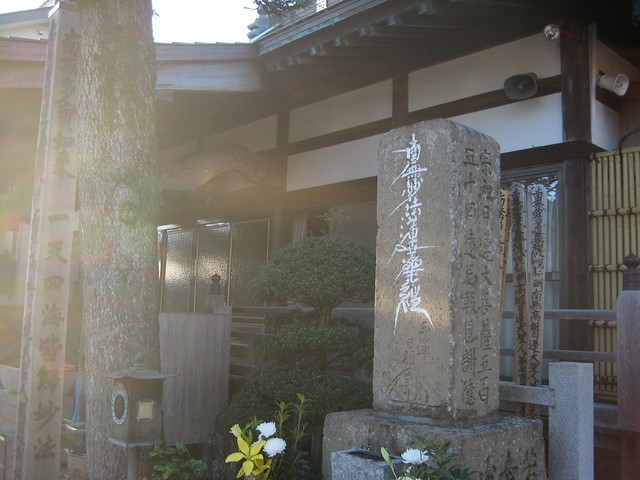
From the back yard of Shounji, you can enjoy the view of Mt.Fuji.
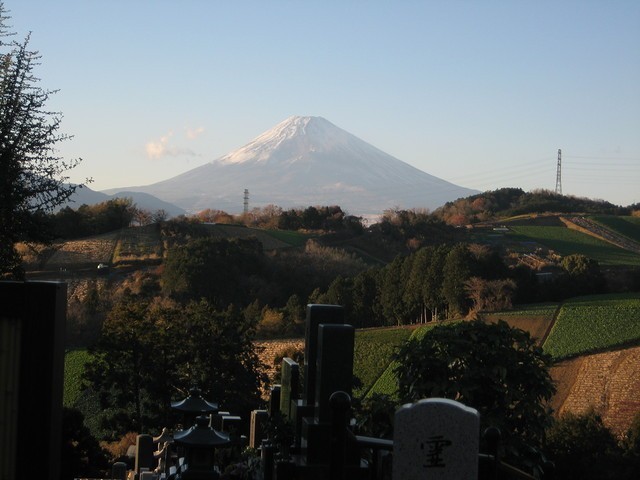
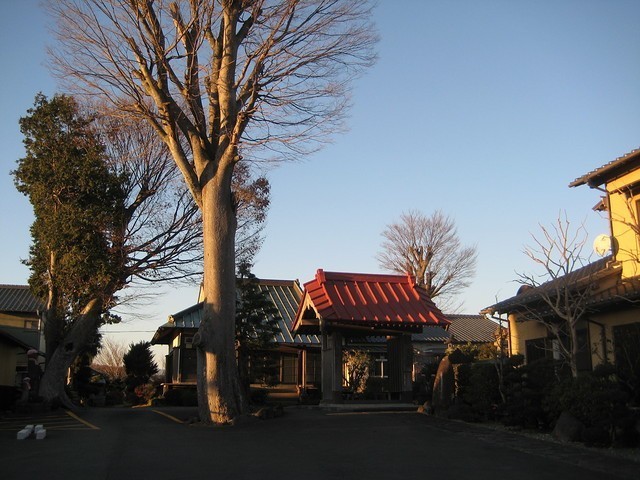
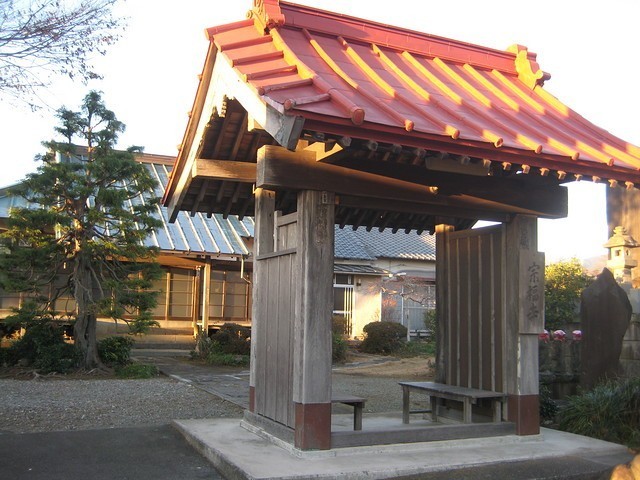
At Tsukahara-Shinden(หดVc), the old Tokaido is swallowed by the National Route 1 completely.
You may wanto to take a local bus there to Mishima Shrine, but please continue to walk down a few more minutes.
You reach at Nishikida-Ichiri-zuka.
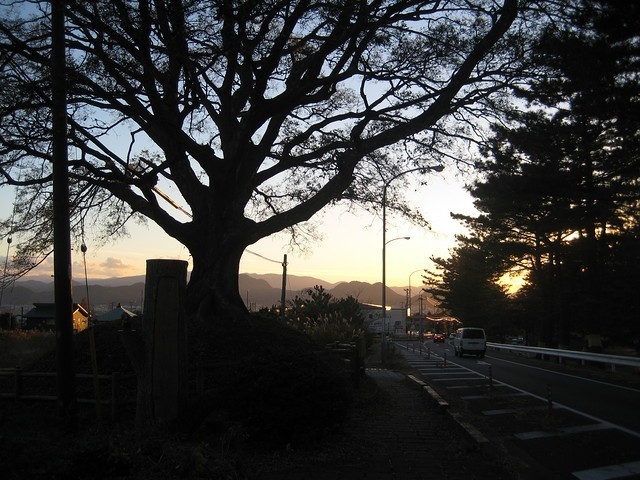
During Edo era (1603-1867), milestones were set every 4 kilometers (they called Ichi-ri, "Ichi" means "1") along the main routes.
Zuka or Tsuka means a kind of tumulus that made for easy distinguishing from the road by banking or tree-planting. Ichiri-zuka at Nishikida, there still are milestones on both side of the road and huge zelkova trees, that might made shadows travelers could take a short rest under on their hard journey.
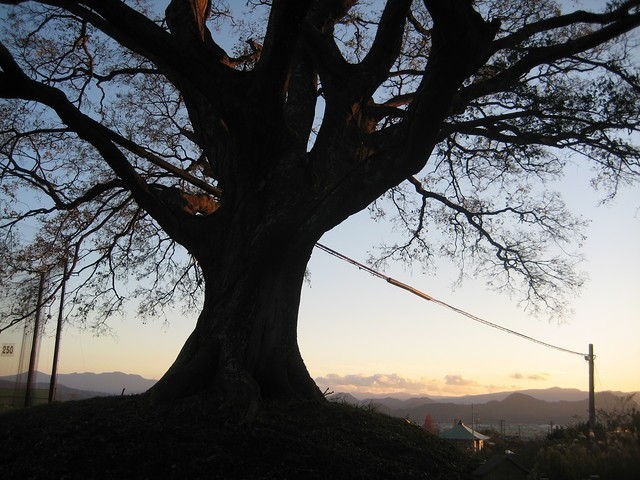
Though the old Tokaido of this area was unfortunately turned into the heavy traffic National route 1, Nishikida Ichiri-zuka is a very rare instance that not only one but both side's milestones of the road remain.
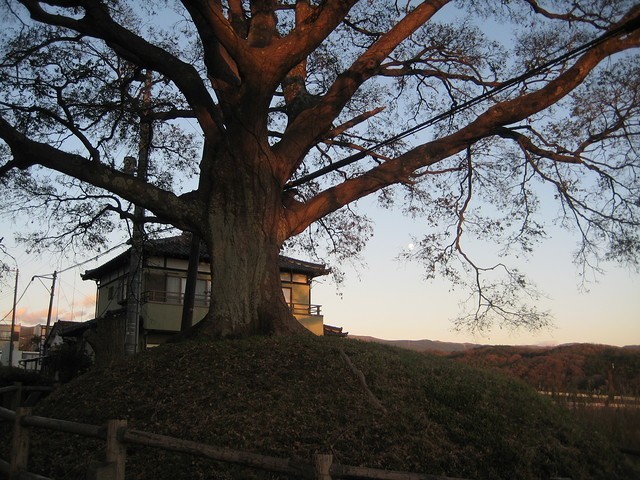
After 15 minutes walk from Nishikida, I finally got to Mishima Taisha (Oๅะ, Mishima Shrine) after dusk.
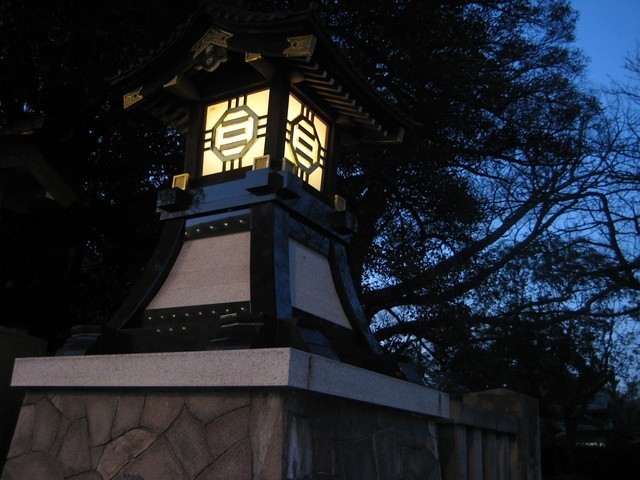

I could not take good photo with my 10 years old coarse camera, please allow me to post the ones of this shrine I had taken the other day.

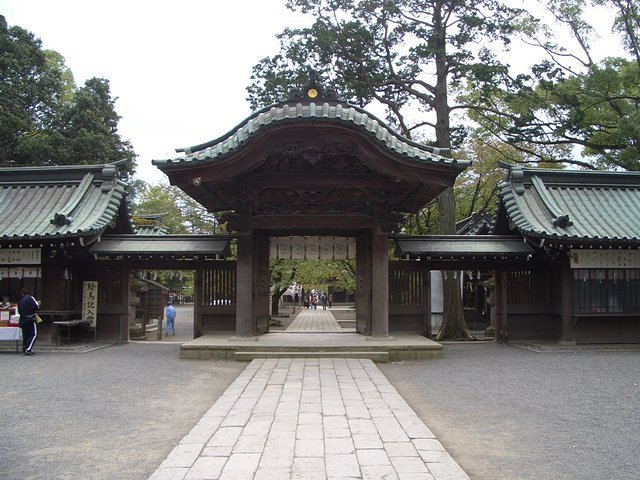
|
| next post |
|
List of Posts:
2014/07/04 - Where Heda? 2014/03/24 - Walk the old Tokaido from Kakegawa to Hamamatsu 2014/03/21 - Walk the old Tokaido from Fujieda to Kanaya 2014/03/21 - Walk the old Tokaido from Kanaya to Kakegawa 2014/03/20 - Walk the old Tokaido from Shizuoka to Fujieda 2014/03/19 - Walk the old Tokaido from Okitsu to Shizuoka 2014/01/30 - Matsuzaki, an old fashioned small port town 2014/01/20 - Walk the old Tokaido from kanbara to Okitsu 2014/01/14 - Walk the old Tokaido from Mishima to Yoshihara 2013/12/16 - Walk along the old Tokaido from Hakone to Mishima |
